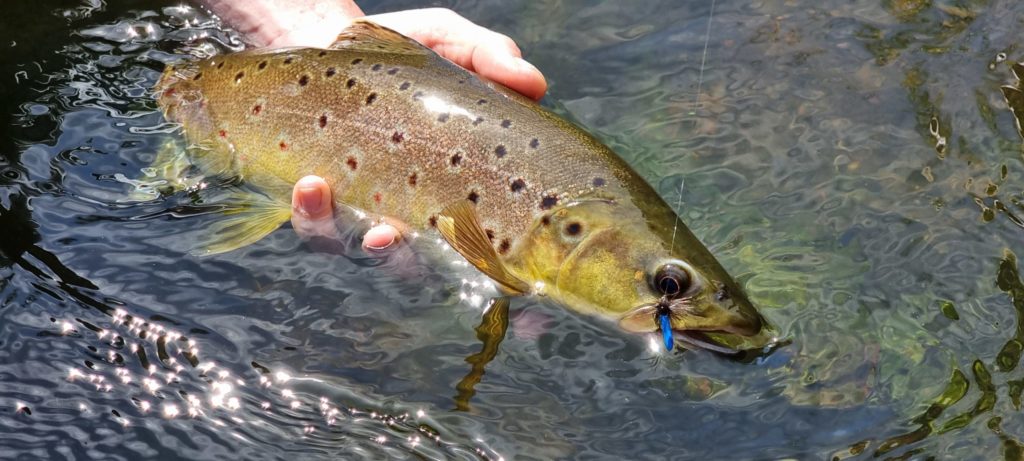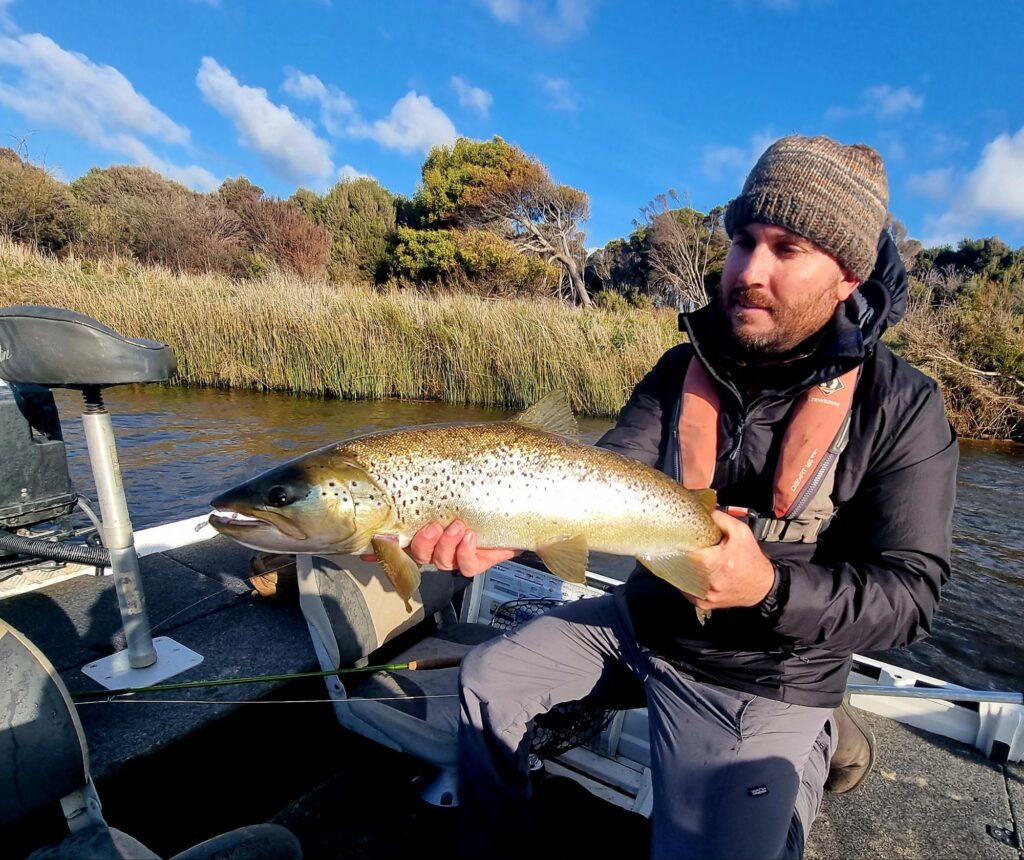Do you ever think about sound and movement, and how sound and movement can be used to increase your catch rate? Using sound and movement is a part of fly fishing that I experiemented with a lot this past season, particularly while sightfishing. By sound and movement, I’m talking about the sound vibrations that your fly makes, particularly upon landing on the water, or by physically moving the fly on the water.
My best fish of the season was around 8lbs, a chunky sea trout that took my custom hammerhead style sea-trout fly. The trout was instantly alerted to the fly as it ‘plopped’ into the water with a large, open-loop lob. The same goes for the next two fish, 6lbs and 3lbs which were all attracted by the lob-and-plop, but caught on the hang (at the end of the retrieve).
And what about dry flies? Nearly every fish fixated on terrestrials or duns skating around the water surface will be triggered by the appropriate ‘smack’ of the dry fly landing. Rather than a wet-fly ‘plop’, think more of a terrestrial ‘plink’. Damsels, aphids, hoppers, skating duns, you name it and it is always more effective to have the fly ‘plink’ on to the surface a couple feet above the sighted fish, as opposed to a perfect soft presentation with minimal disturbance. In fact a long dead-drift presentation, with no plink at all, often gets completely ignored.

A Tasmanian fly fishing damsel feeder – landing the terrestrial with an obvious ‘plink’ is a key part of the tactic
And what about the twitch? How often does a Western Lakes trout cruise past your dry without even acknowledging it? If a fish has failed to acknowledged my fly, I will always try a single twitch to get the fishes attention. By twitch I mean that the fly needs to twitch or skate for an inch or two, no more, and it is a single twitch only. If the fish sees the fly already, don’t move it, as this will be an instant game over. Same if the fly submarines under the surface on the twitch, rather than skating, making more of a gloop than a twitch. Again, this will spook the fish. All said, the twitch is responsible for converting about 30% of our Western Lakes fish each season, so it is a tool worth learning.
One final golden rule: never land the fly downstream of the trout. Nine times out of ten if you land near a fish’s tail, the trout will be spooked instantly. This is the biggest cause of lost opportunities I see on the river. It is better to present the fly to one side above the trout, and a little long, then to risk being short and landing around the tail. This is why I use long but easy to turnover leaders, to increase the margin for error on presentation.
So why are the sound and energy vibrations caused by your fly so important? Along the side of the trout is the lateral line, roughly where the pink stripe on a rainbow trout is. This is a super-large sensory organ, picking up vibrations and other signals from the water flow around them.
These signals can be used to orientate themselves in an optimal part of complex water flows, locate prey items, and escape from predators. In terms of locating prey, in our examples the different tactical ‘plops’, ‘plinks’ and ‘twitches’ of the fly are used to create sound energy and vibrations that alert the fish to a potential prey item (our fly!). Rather than relaying on just the visual cues of a dead-drift presentation, we are combining the visual cues with acoustic cues, making our presentations much more effective and getting instinctive takes.
On the flipside, predatory fish, birds (or humans) disturb the water ahead of them as they move, creating many different forms of sound and energy waves which stimulate the lateral line of the prey item (the trout), causing it to spook. This is why landing behind a fish with your fly can be so devastatingly effective at spooking them, in addition to wading noisly, or landing the end of the flyline heavily near a trout.
There are heaps of wives-tales about fly fishing, and having to use a soft and quite presentation each cast is one of them. Sure there is a time and place for subtlety, but experiment with sound and fly movement, and you’ll see your catch rates rise, particularly on larger territorial fish.

A solid Tasmanian sea trout, caught using a heavy ‘plopping’ presentation
